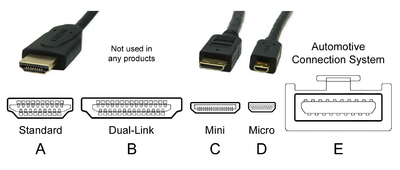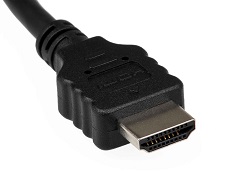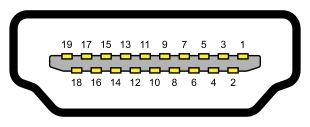What is a HDMI?
HDMI (High Definition Multimedia Interface) was first introduced back in 2001 and it was made available to the general public on December 9th, 2002. HDMI was launched in order to join audio and video into a single interface, which helped to reduce the clutter of cables around the desktop. HDMI makes use of DVI’s (Digital Video Interface) core technology and its basis is from HDCP (High bandwidth Digital Content Protection). HDCP is made to secure the transmissions between the sender (laptops, DVD players, Digital Camera’s among others) and the receiver (the display).
Advantages
One of the biggest, if not the biggest advantages of using HDMI cable is that, given it can carry both audio and video signal, it tremendously reduces the amount of wire clutter in or near your workspace. In addition, HDMI signals are now available on nearly every device nowadays (not just on high end devices), which opens up a variety of devices, which can be connected together, for example you can use an 80inch T.V. as a monitor if you wish. Furthermore, HDMI offers a secure transmission (via authentication and encryption) of data, free of any alternation and transmits data without any compressions, which results in no loss in quality of audio or video. Moreover it delivers amazing color depths, because it supports a multiple formats such as 12bit or 16bit.
Disadvantages
HDMI does come with its fair share of problems. Possibly the biggest of them being the distance of the cable, category 1 HDMI cables measure at 35 meters while category measure at 10 meters and the use of connectors to extend the cables, while resolving the length issue, do reduce the speed of data transfer and could result in affecting the quality of audio or video. In addition HDMI cables are more expensive than other cables, such as DVI or VGA (however the HDMI cables are getting cheaper). Moreover delay in authentication process could result in the user experiencing a black screen.
Connectors
HDMI comes in five different connector types, Type’s A, B (HDMI 1.0), Type C (HDMI 1.3) and Type’s D and E (HDMI 1.4). Types A, B, C and D have 19, 29, 19 and 19 pins respectively. The development of HDMI is carried out by Sony, Toshiba, Philips, Hitachi and Silicon Image, collectively known as ‘The HDMI Working Group’,
Versions
At the time of writing, HDMI has 6 different versions:
| 1) Version 1.0 2) Version 1.1 3) Version 1.2 4) Version 1.3 5) Version 1.4 6) Version 2.0 (latest 2.1a) |  |


